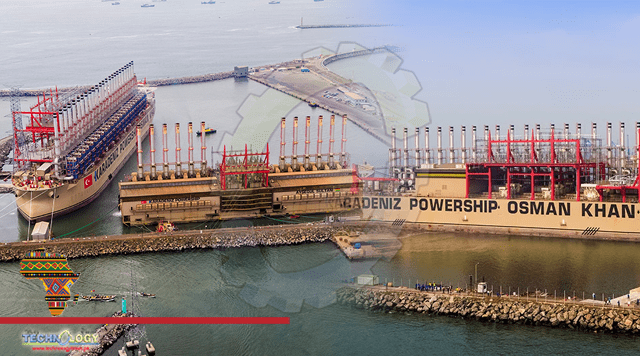Powerships has been collaborating with Mitsui OSK Lines since 2019 in a joint venture called KARMOL to offer a “reliable and preferable LNG to powership solution”.

Energy minister Gwede Mantashe recently announced the preferred bidders for the government’s emergency risk mitigation IPP programme, which include three Karpowership SA projects.
Karpowership SA is a subsidiary of Karadeniz Holding, a Turkish energy company which owns and operates power plants and powerships.
The winning bids from Karpowership SA are for liquified natural gas powerships at Coega, Richards Bay, and Saldanha.
Karpowership SA will station its powerships at the three coastal towns to provide 1,200MW of ship-to-shore electricity.
Speaking to Newzroom Afrika, IPP Office CEO Bernard Magoro said the liquified natural gas will be provided via ships as South Africa does not have this resource naturally available.
The liquified natural gas (LNG) is then channelled into generators on the powerships to produce electricity.
The power is fed directly into the transmission network from an onboard high voltage substation which does not require any land acquisition.
Karpowership has been collaborating with Mitsui OSK Lines since 2019 in a joint venture called KARMOL to offer a “reliable and preferable LNG to powership solution”.
The solution generates power through the powership by receiving regasified LNG through a floating LNG storage and regasification unit.
According to Karpowership, the collaboration helps to drive down construction costs and create savings for customers which urgently needs to meet the power demand.
The natural gas solution also serves as a replacement for higher emission fuels to reduce greenhouse gas emissions.
KARMOL’s first Floating Storage Regasification Unit (FSRU) was delivered on 15 March 2021 and has begun sea trials off Singapore.
After testing it will be deployed to Senegal where Karpowership is operating a 235MW capacity powership.
The company plans to switch its entire fleet of powerships to LNG, which it says is a sustainable, affordable, and environmentally responsible fuel.
Karpowership currently operates in numerous African countries, including Ghana, Mozambique, Sierra Leone, Gambia, Senegal, and Sudan.
South Africa will now be added to this list after the successful Karpowership SA emergency risk mitigation IPP bid.
The Karpowership SA projects are three of the eight preferred bidders of the government’s emergency risk mitigation IPP programme announced by Mantashe.
The other projects, which are also aimed at alleviating electricity supply constraints and reduce the extensive use of diesel-based peaking electrical generators, are:
- ACWA Power Project DAO
- Mulilo Total Coega
- Mulilo Total Hydra Storage
- Oya Energy Hybrid Facility
- Umoyilanga Energy
These preferred bids are set to produce 1,845MW using a combination of solar PV, wind, batteries, and the three liquid natural gas powerships.
Mantashe said these power projects will inject a private sector investment of R45 billion into the South African economy.
The bidders are now required to reach financial close by the end of July 2021. Due to the urgency to bring power online, the minister said this date is not negotiable.
The first power from these projects is expected to be connected to the grid from August 2022.
Mantashe has also announced that the first bidding round to acquire 11,813MW from a range of technologies has opened.
The first bidding round is for 2,600MW – 1,600MW from wind and 1,000MW from Solar PV.
The energy department is also planning to release four more requests for proposals within the next 12 months, which include:
- 2,600MW from renewable energy.
- 3,000MW from gas.
- 1,500MW from coal.
- 513MW from battery storage.
“In line with the IRP and the provisions in the electricity regulations of new generation capacity, additional determinations will be issued to Eskom and Municipalities as and when requests are received,” Mantashe said.
Originally published at My broadband